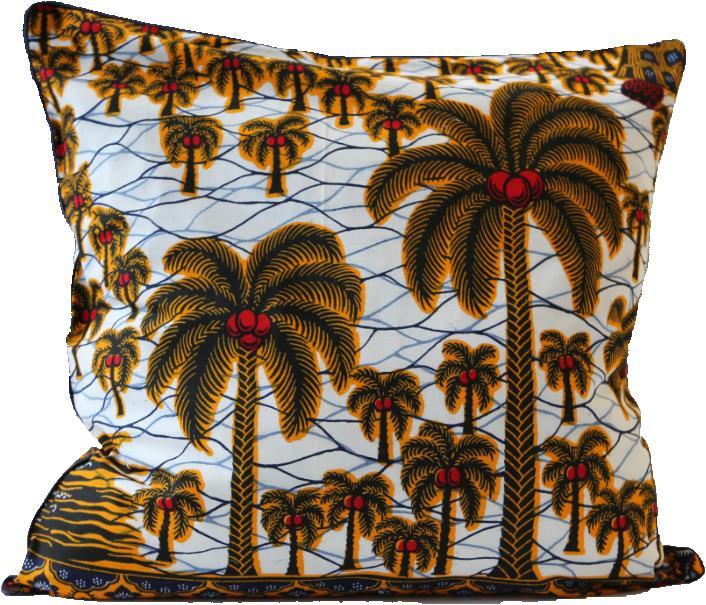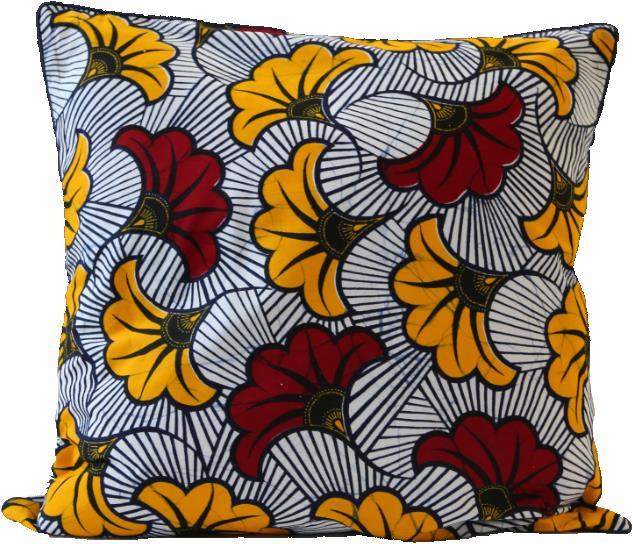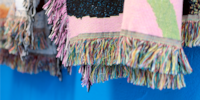
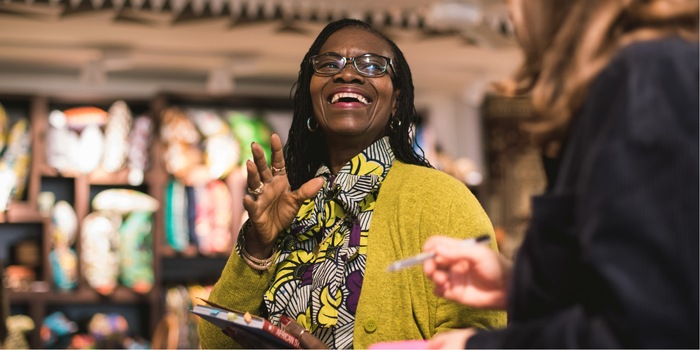
Textiles that tell a story
Wax print fabrics are reproduced, but not always the same. When I paid a visit to the two founders of the «Cassare» Zurich concept store and eponymous label, they explained why.
I first came across Cassare on a grey Zurich day in early winter. I was on my way to the «Frau Gerolds Garten» restaurant and passed a shop window that really stood out in a city like Zurich. Even from afar, I could tell the shop was filled from floor to ceiling with accessories and clothes with stunning prints from Africa. While most shops stock a collection of pared-back monochrome products, Cassare has an appetite for more. It offers bold colours and prints with motifs that tell a story.
I wanted to know who is behind the shop concept and label, so I paid a visit to the two founders Bola und Felix Huwiler with my colleague and photographer Thomas Kunz. The name «Cassare» is Portuguese and describes 13th and 14th-century relationships between European men and African women. It roughly translates to «keeping house». The founders are partners in both their business and personal lives. They showed us how varied contemporary African design can be and answered a few questions for me.
As I was scrolling through your Instagram feed, I couldn't find out how long you've been going. How long is it?
Felix: We started up in March 2017, but the idea had been in our heads for a long time. Our first African shirts and dresses were made in 1986 under the Bronx Brothers label.
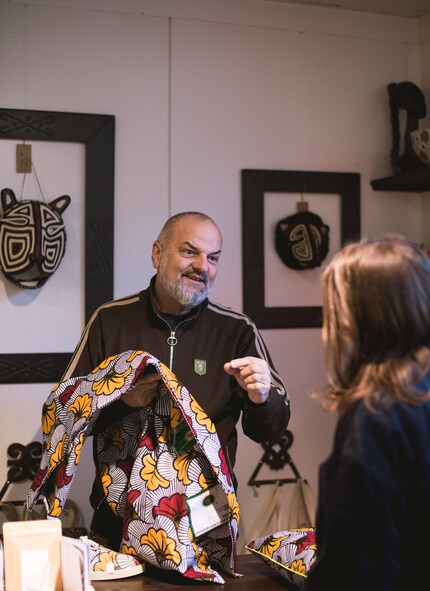
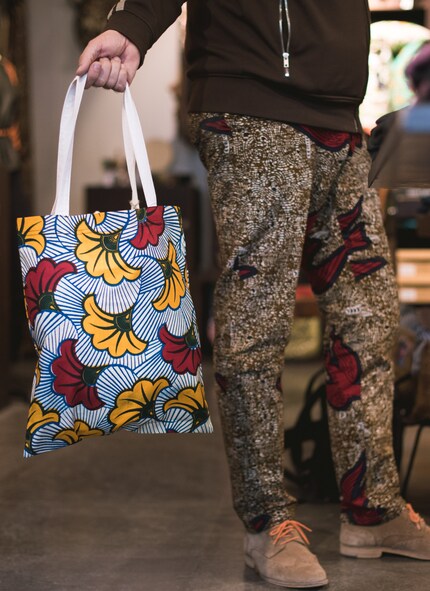
Where did the idea for Cassare come from?
Felix: Bola was busy bringing up our three children. In the 90s, I was a buyer and creative director at BIG and Jamarico. After the new owners (Carhartt) decided to change Jamarico stores to the new brand, my once buried dream of an African concept store rose to the surface again. A weekend in Paris motivated us to turn our idea for Cassare into a reality.
What was the biggest challenge at the start?
Felix: It's hard to say. There were a lot of hurdles, such as finding a suitable location for our premises. Luckily, we were welcomed with open arms at Zurich's Frau Gerolds Garten. The production of our clothes in Abidjan also continues to pose problems. And not only that: the latest expansion of our collection, porcelain crockery, took almost an entire year to reach the manufacturing stage.
What makes your fabrics stand out?
Felix: We love traditional African fabrics and designs. But, because we live in Europe, we want to find a modern interpretation to ensure a sophisticated mix of clothing in particular. The options and inspiration are endless. Hand-woven fabrics are really expensive and their applications are limited. This is why we use more wax prints and indigo batik from Nigeria.
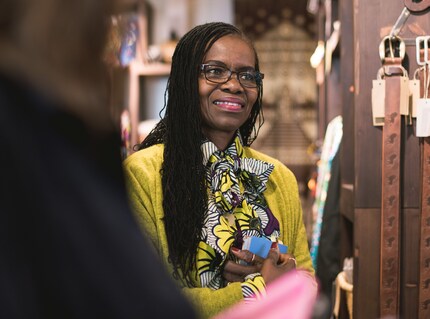
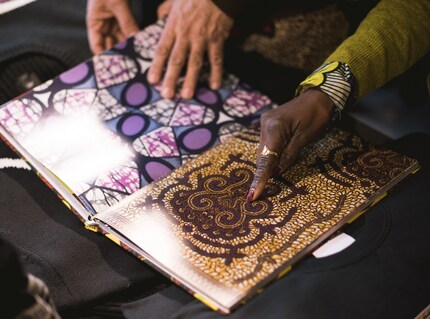
What is a «wax print»?
Felix: Some of us learned about wax printing at school. Rollers apply wax to cotton fabric like a dye to keep those areas white. Colour only takes to the areas without wax. This makes every printing process irregular and unique. Unlike conventional printing, as used by Desigual for example, both sides of the fabric are printed. The patterns and prints are mostly over 50 years old.
There are many theories as to where the fabrics come from. It's said that they have their origins on the Indonesian islands of Java and Bali. You can see the difference compared to the original because the fabric is often made from polyester and the inside isn't fully printed. This results in discolouration and causes the wearer to sweat more.
How do you ensure that your products are «fair»?
Felix: We only buy our raw materials and ready-made products from certified fair trade suppliers whose proceeds contribute to good causes. We know the workshops in Abidjan and Lagos personally and are delighted to place orders with them. Above all, our motto is «work not charity».
Is your production exclusively in Africa?
Felix: Because we prioritise short routes and don't like to fly all the time for environmental reasons, we also get some of our fabrics sewn in Italy. We are actually creating our own print in Como at the moment. We also cover old furniture such as sofas with African fabrics.

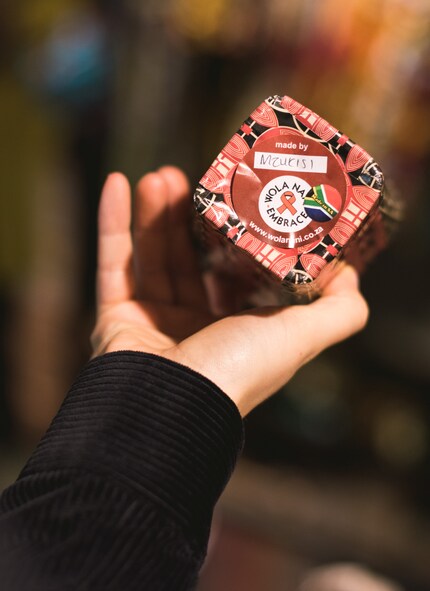
Judging by your social media channels, you seem to have a strong relationship with your customers. Who makes up your customer base?
Felix: It's extremely varied. People of all ages shop with us, which is really exciting. Our customers are around 80% women and 20% men. Older women in particular are really interested in Bola and want to know all about Africa. Younger people are more reserved. When our equally young staff are in the store, however, they note that we're trendy and dare to try new things. Many of them even pose for us on Instagram, which I think is really nice. Along with enthusiastic Americans – especially African Americans – sceptical Swiss locals and Korean and Japanese tourists, we're also getting more French and French-speaking Swiss visitors. They are open to our colourful products and often more sure of their style than other customers. South Africans feel at home here too, and Africa experts regularly seek out conversation with us.
Your collection includes ceramics and furniture as well as textiles. How would you describe your interiors style?
Felix: That's a tough question. Probably something between shabby and ethno chic, but never full-on hippie. Stylish, but not luxurious. Above all, it should radiate warmth with accessories such as our printed cushions.
Now available at Galaxus
Cassare's cushion covers are a new addition to the Galaxus range. Combine them like Bola compiles an outfit, pairing them with plain chairs and cushions or mixing them with other colourful patterns. After all, when it comes to interiors, occasional breaks in style give the look that special something.
Enjoyed this article? Follow me for updates in our interior range and make sure you don’t miss out. Just click the black button next to my profile. Thanks for subscribing.
Like a cheerleader, I love celebrating good design and bringing you closer to everything furniture- and interior design- related. I regularly curate simple yet sophisticated interior ideas, report on trends and interview creative minds about their work.
Interesting facts about products, behind-the-scenes looks at manufacturers and deep-dives on interesting people.
Show all